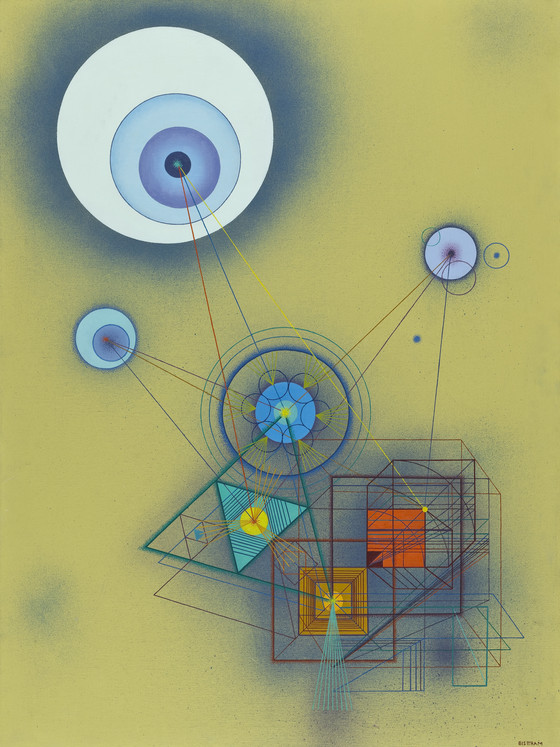Working in Taos, New Mexico, Emil Bisttram became one of the foremost members of the American avant-garde....
Working in Taos, New Mexico, Emil Bisttram became one of the foremost members of the American avant-garde. Although he supported himself as a commercial artist, teacher, and painter of representational figurative compositions and landscapes based on the life of the indigenous Southwest, as early as the 1920s Bisttram explored progressive aesthetics. He based his ideas on a variety of artistic and philosophic sources: Jay Hambidge’s theory of Dynamic Symmetry-- a design method inspired by the golden triangle to create a perfectly balanced composition, the ideas Wassily Kandinsky expressed in his treatise On the Spiritual in Art, and the teachings of Russian-born Nicholas Roerich. By 1938 when Bisttram joined with Raymond Jonson of Santa Fe to form the Transcendental Painting Group (TPG), they both had developed a strong belief in the creation of non-objective art that was radical and universal. Utilizing the new technique of air brush painting, they both began creating pictorial cosmos that suggest the contemporary fascination with outer space. As their manifesto stated, the goal of a transcendental art was to “carry painting beyond the appearance of the physical world, through new concepts of space, color, light and design, to imaginative realms that are idealistic and spiritual.” Much of Bisttram’s paintings suggest a fascination with the macro and the microspheres of life and the universe, the infinite cosmos and the microscopic realm of the atom. Henry Hunt, a professor at the University of New Mexico, explained Bisttram’s non-objective paintings, “The power of his work emanates from his understanding that within the atom lies the infinite structures of basic reality. Bisttram goes behind the surface image of things and reveals the conceptual image of the Universe.”
Bisttram often featured both circles and orbs that suggest planets and other celestial bodies as well as the detailed structure of tiny geometric-shapes. Projection, No. 3, is one of his earliest, largest and finest compositions. Created two years prior to the founding of the TPG, he already incorporated in it his total philosophy of art and life. Within a khaki green field float in the upper left different colored concentric circles, linked by filigree-thin lines linking it to other forms. In the lower right, balancing the brilliant rings of color, is a transparent and overlapping arrangement of a large circle, triangle, and rectangles, all repeatedly dissected within to form hierarchies of precise structures.
The painting was exhibited in 1951 in the exhibition “Art and the Atom,” held by the Los Alamos Scientific Laboratory in New Mexico. (Ilene Susan Fort, Senior Curator and The Gail and John Liebes Curator of American Art )
More...
